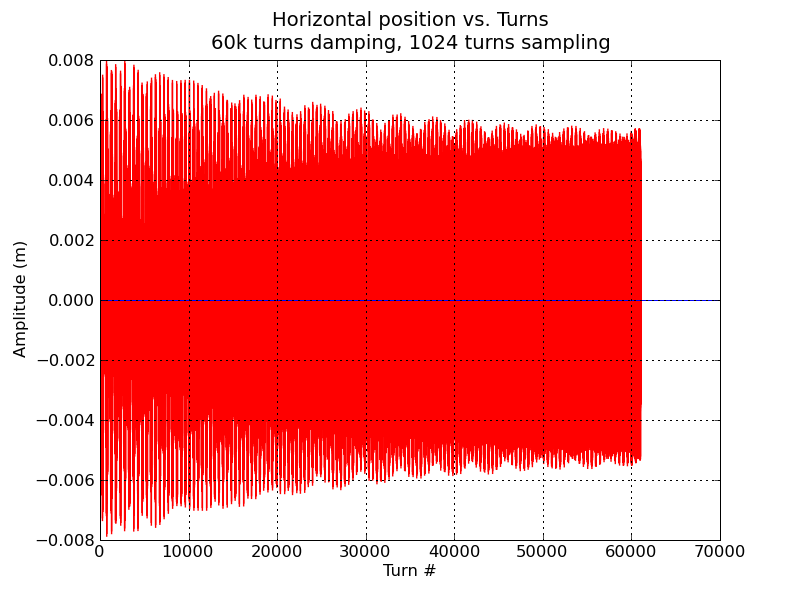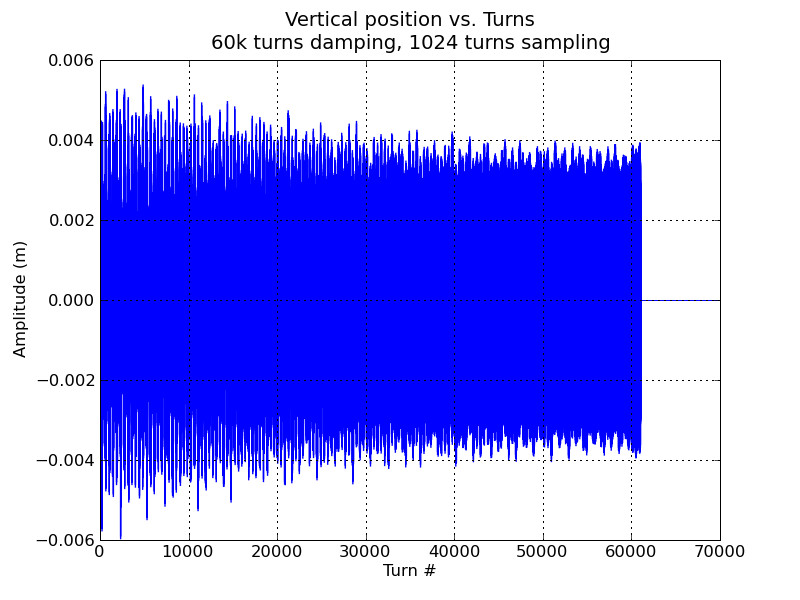

In order to diagnose problems with 6x6 cbar simulations, record and plot all 60k turns. Use the lattice cta_2085mev_20090516.lat with no skew quads on. Damp for 60k turns, sample for 1024 after that.
The system damps down to an amplitude of +/-8mm horizontal, +/-6mm vertical after about 40k turns. For this same data, plot Cbars:
This is roughly the same level of agreement we see from 4x4 tracking/simulation, when no coupling is present. Now try setting vertical drive amplitude to 0 and repeat zero-coupling scenario (identical to above):
No noticeable change in RMS residuals, even for Cbar11 which requires vertical driving in order to measure... this makes no sense. Just to verify, plot the vertical amplitude for the 1024 turns being sampled:
Now examine how RMS cbars depend on the number of turns sampled. Using the following setup:
Results of 4x4 simulation:
Results of 6x6 simulation:
In both cases, with no coupling RMS cbars decrease with an increased sample size (as expected). When coupling is introduced, unusual behavior results.